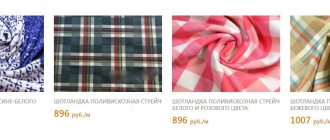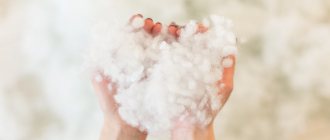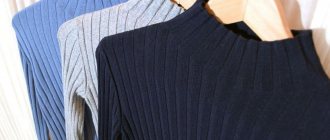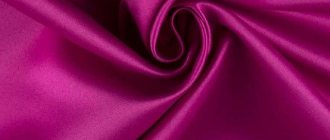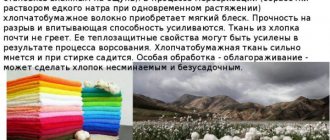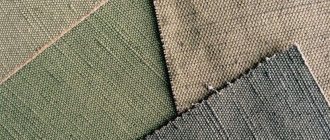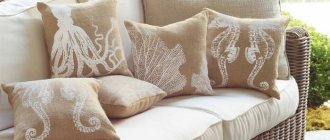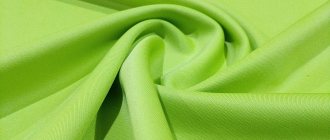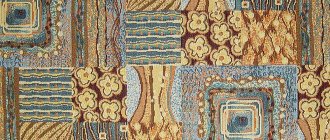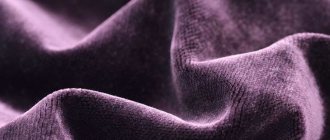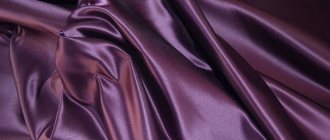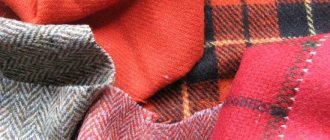Workwear is an invariable attribute of representatives of some professions. Due to the fact that specialists wear such products throughout the entire working day, the requirements for the material are quite high. In addition to an attractive appearance, the fabric for a uniform must be of high quality, safe, wear-resistant, and practical. Mixed materials meet these criteria, one of which is tissi. The synthetic and natural fibers included in its composition, as well as various weaving techniques, make it possible to combine the advantages of both types of raw materials? Thereby minimizing operational disadvantages.
Features and characteristics of the fabric, description of the material
Tisi (TS, TiSi, T/S, TC Poplin) is a thin, pleasant to the touch, but slightly rough fabric with a noticeable interweaving of fibers, reminiscent of natural linen. It is produced in all sorts of colors - the cuts can be plain or decorated with some kind of print. This material will tell you about a blanket for a bed in a sea-green bedroom.
The texture of the fabric allows the application of logos, signs, emblems, so it is in great demand among enterprises for which the appearance of employees is of no small importance.
The composition is represented by two components - polyester (about 65% specific weight) and natural cotton (35%). Sometimes, in addition to cotton, viscose or tencel is added to the fabric. At the same time, there are no strictly limited limits in the production of this material - the manufacturer is free to independently decide how many natural and artificial fibers will be included in its products. The density of the material directly depends on the composition - the more synthetics, the higher it is (and the price of such fabric is lower). But most often on the market you can find tissi with a density of 110-240 g/m², but if it is treated with a special impregnation, then the average density is about 160 g/m². Read about tulle mesh and its use in the interior at this link.
Information about the composition of the matter is on the label - if you carefully study it, you will notice something like “T/C65/35/165”. This code means: “TC, 65% polyester, 35% cotton, density – 165 g/m².
The composition of the material determines its following properties:
- ease;
- strength;
- resistance to high temperatures;
- breathability;
- shape and color stability;
- antistatic;
- resistance to mechanical stress;
- hypoallergenic.
Due to the fact that the fabric does not wrinkle and gets dirty slowly, the owner of things made from it always looks neat.
Advantages and disadvantages
Tissi makes products that are comfortable, lightweight and attractive in appearance. Other advantages include:
- pleasant sensations upon contact with the skin;
- variety of colors;
- no shrinkage after washing or drying;
- budget.
A mixed fabric impregnated with a special water-repellent substance does not absorb water, repels dirt and dust, and does not form stains (which is especially appreciated by medical workers).
The disadvantages of the material are associated with the large number of synthetic fibers in the composition - such clothes will be hot in the summer, but cold in the winter. Read about the elasticated bedspread and bed cover here.
Due to the lack of elasticity, only straight styles with a loose fit are available, which do not fit the figure, which can be a disadvantage for some fashionistas.
Production: how to get it
The main suppliers of matter are South Korea and China. There are two methods for making such textiles:
- Interweaving of fibers of various compositions. With this method, the resulting fabric has the properties of both natural and synthetic components, and the appearance from the back and front sides is no different.
- The twill method, in which a scar is formed on the surface of the fabric, directed diagonally. In this weave, dissimilar fibers are used, as a result of which one side of the fabric turns out to be synthetic, and the other - natural.
Description of characteristics and properties
Thanks to the combination of natural and artificial materials, tissi fabric has the advantages of both. The advantages include:
- Strength and durability: yew clothing will last much longer and withstand greater loads than 100% cotton;
- Lightness and breathability: the clothes are comfortable to walk and work in;
- Stable shape (does not deform over time, does not shrink), low elasticity, wrinkle-resistance, no pilling or snags: the uniform will not wrinkle during operation and will retain a neat appearance under any load;
- Lack of electrification and unpleasant sensations upon contact with skin;
- Hygienic, dust-proof and resistant to various types of dirt: the fabric is easy to wash and clean even from difficult stains, such as blood. This happens because impregnations prevent dirt from penetrating too deeply into the fibers, and they are easily removed from the surface;
Tisi is often used when sewing military uniforms; camouflage colors are applied to it
- Resistance to high temperatures and frequent washing: the fabric also tolerates frequent strong processing (for example, boiling);
- Many bright colors, the ability to apply your own pattern or emblem: the company can create its own uniform;
- Quick drying and easy washing: the material is not demanding;
- Affordable price.
All these advantages allowed tissi workwear to perform best when worn at work with “increased load”. Today, a significant part of the uniform is made from it.
It has fabric and minor disadvantages:
- Due to the high synthetic content, it may be inconvenient to be in it all the time;
- Due to high thermal conductivity, clothing will not heat;
- Due to low elasticity, you can only sew loose-fitting, shirt-type clothes.
Due to some features, you can only sew straight-fit clothes from fabric
Varieties
Depending on the final purpose of the tissi, the following types are distinguished:
- Shirt Lux-120 – fabric with plain weave, density 120 g/m². It is treated with water-repellent impregnation. It can be plain or with patterns and emblems. It is used as a lining material for jackets, outerwear, as well as for sewing uniforms for medical institutions or food industry enterprises.
- Shirt Lux-150 is a thinner and, accordingly, cheaper analogue of the previous type.
- Raincoat - the composition includes 80% polyester and only 20% cotton. Designed for the manufacture of outerwear, as well as uniforms for law enforcement officers.
- Sonata is a material that always comes with a quality certificate. It features a high cotton content (45%).
It is used for sewing workwear for doctors or laboratory workers, catering workers, and representatives of the service sector.
Composition and production technology
Sisu fabric, described above, is a mixture of natural and artificial raw materials. The optimal ratio of materials in tissi is considered to be 35% cotton and 65% polyester, but manufacturers often try to reduce the cost of the fabric by “shifting” the proportions. A common ratio is 20% cotton to 70% polyester.
If necessary, the fabric is additionally treated with water-repellent impregnations so that it better resists dirt and specific liquids (for example, blood and other organics).
You might be interested in this Features of fuqra: fabric properties
The material is woven with plain weave threads. The surface is rough, with clearly visible weaving. When using twill weaving, a fabric with a diagonal rib is obtained.
The surface of the fabric is uneven, rough, but pleasant to the touch
Scope of application: what is sewn from fabric
The characteristics of the fabric allow it to be used in many areas. Uniforms for workers are made from yew:
- medical institutions, various laboratories;
- food industry enterprises;
- canteens, bars, cafes, restaurants;
- hotels, hotels;
- cleaning companies;
- security organizations;
- companies specializing in advertising.
Clothes lined with a durable, waterproof yew lining are valued among hunters and fishermen. You can often see military personnel and firefighters wearing uniforms made from this material.
Scope of application
Tisi fabric is mainly used for sewing corporate, military or medical clothing. This is due to the characteristics of the material: its inelasticity (which is why you can only sew loose, straight-cut clothes), hygiene and breathability (can be used in areas where sterility is important), strength (the material can withstand a large number of washes and stronger treatments, for example , boiling and sanitizing). The fabric's popularity also owes to its low price: it is profitable to sew uniforms from it.
Tisi is often used in the production of medical clothing
Important! Tisi is easy to paint and can be printed with a company logo.
Shirt fabric is used in the following industries:
- In medical institutions and scientific laboratories;
- In cafes, restaurants and other food places, in the food industry, for example, in bakeries;
- In cleaning companies;
- In hotels, inns, hostels;
- In advertising and promotions.
You might be interested in this Features of coupon fabrics for dresses and skirts
Tisya is also used in sewing military or firefighter uniforms, and is used in the manufacture of waterproof linings for warm workwear for fishermen and hunters.
The material performed well in the manufacture of workwear
Recommendations for caring for fiber products
Caring for items made from mixed fabrics, such as Boston and boucle, will not cause much trouble. Washing is carried out both manually and by machine, the water temperature should be 35-40 ºС. Since the material is not prone to excessive contamination, any detergent can be used - universal powders or gels will easily remove all stains that have formed. Read about Turkish bamboo towels here.
Iron things from the inside out, setting the iron to “synthetic” or “nylon” mode.
The only thing you should avoid is bleaches, which are only suitable for white fabrics. Products can be wrung out and dried in any convenient way. Workwear with water-repellent impregnation tolerates boiling well.
Which fabric is better: Tisi or Satori
Satori fabric can compete with tissi. This is a mixed material that is most often used in sewing uniforms for doctors, cosmetologists, cooks, and waiters. The advantage of this type is its composition, which is half cotton. This ensures not only strength, but also softness of the product, good heat transfer, breathability, and high absorbent properties. Satori can be washed using bleach or disinfectants. The main disadvantage of satori is the cost, which is significantly higher compared to less natural tisi. Read about an orthopedic sleeping pillow in this article.
The lower the specific gravity of synthetic components, the more such characteristics as strength, service life, and resistance to stains suffer. Therefore, the choice of material for workwear depends on the direction of its further use, as well as the financial capabilities of the buyer.
